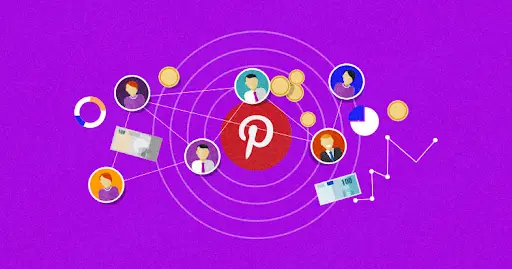
Boost your earnings by using Pinterest for Affiliate Marketing. Pinterest is a vibrant platform that offers immense potential for affiliate marketing. It is a visual discovery tool where users can find inspiration and ideas for their interests and hobbies. If you’re new to the concept, affiliate marketing involves promoting products or services and earning a commission for each sale made through your referral link. In this guide, we’ll explore how to effectively use Pinterest for affiliate marketing, the rules you need to follow, how to sign up, and some tips for beginners.
Pinterest is unique because it acts like a search engine for images. Unlike other social media platforms where content quickly disappears down the feed, Pinterest pins have a long lifespan. This means your content can be discovered and shared long after it’s been posted, providing continuous opportunities for earning affiliate commissions.
Here are some reasons why Pinterest is ideal for affiliate marketing:
Before you can start affiliate marketing on Pinterest, you’ll need to set up your account. Follow these steps to get started:
To ensure a successful and sustainable affiliate marketing strategy on Pinterest, it’s important to follow the platform’s guidelines:
To succeed in affiliate marketing on Pinterest, creating engaging and clickable pins is crucial. Here are some tips to help you create pins that convert:
Check out Phones Under $400 | Phones Under $500 | Phones Under $600
Once you have created your pins, promoting them is key to reaching a larger audience. Here are some strategies to maximize your reach on Pinterest:
Monitoring your performance is important for optimizing your affiliate marketing strategy on Pinterest. Here’s how to track your success:
Read More Best Affiliate Programs To Make Money Online | How To Change WordPress Url
If you’re new to affiliate marketing on Pinterest, here are some additional tips to help you get started:
Pinterest offers a unique and powerful platform for affiliate marketing, providing opportunities to reach a vast audience with engaging visual content. By understanding the Pinterest affiliate marketing rules, optimizing your pins, and promoting your content effectively, you can build a successful affiliate marketing strategy. Whether you’re a beginner or looking to refine your approach, the key is to be creative, persistent, and focused on delivering value to your audience. With these strategies in place, you’ll be well on your way to earning commissions and achieving your affiliate marketing goals on Pinterest.
To start affiliate marketing on Pinterest, first create a Pinterest business account and optimize your profile. Join relevant affiliate programs, such as Amazon Associates or ClickBank, and create attractive pins that promote your affiliate products. Make sure to include affiliate disclosure in your pin descriptions.
Key Pinterest affiliate marketing rules include disclosing affiliate links with hashtags like #affiliate, creating high-quality and relevant pins, and avoiding spammy behavior by mixing promotional and non-promotional content. Always follow Pinterest’s community guidelines to ensure compliance.
To sign up for Pinterest affiliate marketing, create a Pinterest business account, then join affiliate programs relevant to your niche. Once approved, you will receive affiliate links that you can incorporate into your pins to start earning commissions.
Beginners should focus on choosing a niche they are passionate about, using high-quality images, optimizing pin descriptions with relevant keywords, and engaging with their audience. Additionally, tracking analytics to understand what works best is essential for improving your strategy.
Increase your reach by joining group boards, engaging with Pinterest communities, using tools like Tailwind to schedule pins, and making use of Pinterest Ads. Regularly create fresh content and interact with your audience to maintain visibility and engagement.

Welcome to Mishtibies,
your gateway to affiliate marketing and all things tech, apps, digital marketing, and gaming. We’re here to help you navigate the digital landscape, discover lucrative opportunities, and maximize your online presence. Join us on this exciting journey